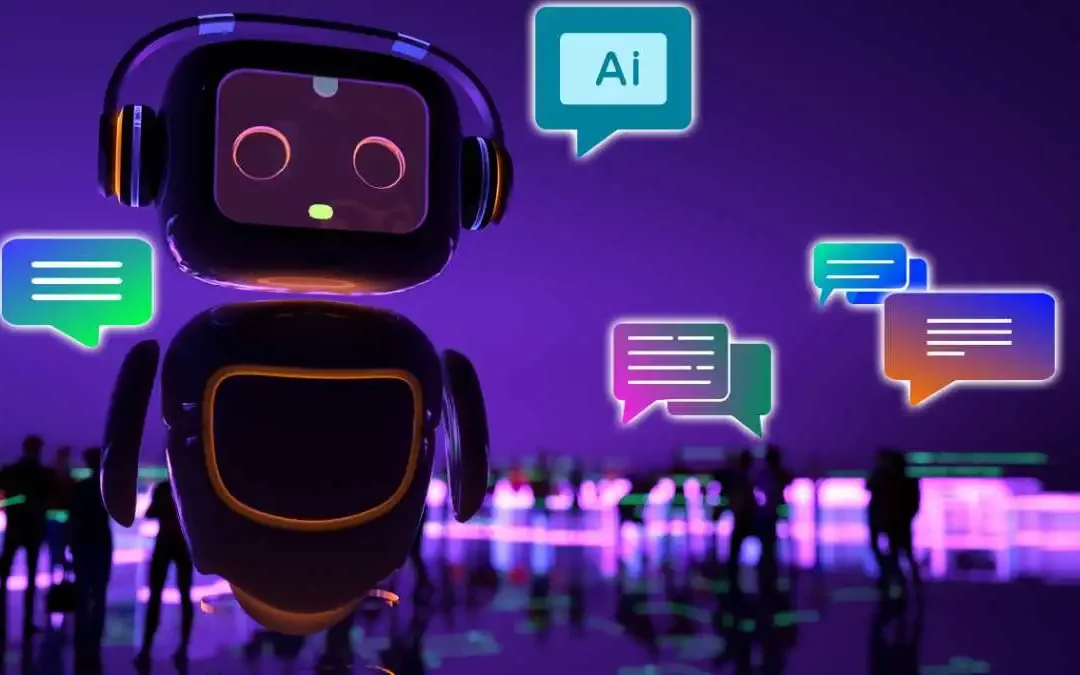What chatbot types are best suited to different business needs? And how many types of chatbots are there?
Chatbots have become increasingly popular tools in companies in every sector, thanks to their ability to automate interactions with customers, improve user experience and reduce operating costs.
In this article, we will look at the main categories of chatbots, the most common use cases, how to implement them in various sectors and answer the most frequently asked questions on the topic.
Updated on July 3rd 2025
Estimated reading time: 6 minutes
Table of contents
Chatbot types trends and data 2025

The chatbot types market continues to grow rapidly, driven by the increasing adoption of AI-based solutions and automated conversations. According to The Business Research Company’s “Artificial Intelligence (AI) Chatbot Global Market Report 2025” the global AI chatbot market will grow from $8.6 billion in 2024 to approximately $11.14 billion in 2025, with a compound annual growth rate (CAGR) of 29.5%. This trend highlights how companies are increasingly focusing on intelligent technologies to improve customer service, optimize internal processes, and create more engaging digital experiences.
Further confirmation comes from Itransition’s “Conversational AI Trends & Statistics for 2025” report, which predicts that the Conversational AI market will exceed $61 billion by 2032. The traditional (non-AI) chatbot segment also continues to expand, with a CAGR of over 24% through 2029.
These numbers confirm the strategic importance of choosing the right types of chatbots for each sector and business context. Choosing the most suitable solution allows you to effectively respond to customer needs and make the most of the potential of the digital transformation underway.
Main chatbot types
There are different types of chatbots, which differ in technology, functionality and objectives. Here are the most important ones:
Rule-based chatbot
Rule-based chatbots work by following predefined scripts and flows. They are the simplest and are ideal for providing quick answers to frequently asked questions (FAQ) or for guiding users in simple decision-making processes.
Examples: appointment booking, basic customer service, automated FAQs.
AI Chatbots (NLP Based Chatbot)
These chatbots use Artificial Intelligence and Natural Language Processing (NLP) to understand natural language and offer more personalized and complex answers.
Examples: virtual banking assistants, e-commerce chatbots for product recommendations, advanced customer care.
Voice chatbots (Voicebot)
Voicebots allow vocal interaction with users. They are used in applications such as voice assistants, intelligent switchboards or smart home devices.
Examples: Alexa, Google Assistant, telephone virtual assistants.
Transactional Chatbots
They are designed to guide the user towards the purchase or booking, completing an end-to-end transactional interaction.
Examples: flight booking, ticket purchase, online ordering.
Hybrid Chatbots
They combine rules with AI to offer both guided experiences and more advanced dynamic responses. They allow you to handle a wide range of requests without giving up control.
Examples: customer care with escalation to a human operator, chatbots for financial services.
Generative AI Chatbots
Based on Generative Artificial Intelligence models. These chatbots are not limited to standard responses, but are able to create original responses in natural language, understanding the context of the conversation and dynamically adapting to user input. They are increasingly used to improve the customer experience, thanks to their ability to offer more natural, empathetic and flexible dialogues.
AI Agents among chatbot types
AI agents represent the most advanced level. These are intelligent conversational systems that can not only respond, but also perform actions, make autonomous decisions, interact with databases or CRMs, and learn over time. AI agents go beyond the normal functions of chatbots, becoming real virtual assistants capable of managing complex and personalized processes.
In short, while the different types of chatbots – from traditional to generative – focus on conversation, AI agents enable a new era of intelligent automation and advanced interaction.
Chatbots vs AI Agents

When it comes to chatbot types, it’s important to distinguish between traditional chatbots and more advanced AI agents. Chatbots are programs designed to simulate conversations with users through predefined or rule-based responses. These chatbots often run on rigid scripts and are used to handle common requests, such as providing basic information or assisting with FAQs.
AI agents, on the other hand, represent a more advanced evolution. They rely on Generative Artificial Intelligence, Natural Language Processing (NLP) and machine learning technologies to understand context, learn from conversations and offer personalized and complex responses. AI agents can not only respond, but also take action, make decisions and manage more complex tasks, such as bookings, managing complaints or selling products.
In short, while the different types of chatbots mainly focus on the automated management of simple conversations, AI agents pave the way for more natural, dynamic and proactive conversational experiences, capable of integrating with business processes in an intelligent way.
Use case: where are the different types of chatbots used?
The types of chatbots find application in numerous sectors and scenarios. Here are some concrete examples:
- E-commerce: AI Chatbots to suggest products, manage orders, resolve pre- and post-sale doubts.
- Healthcare: Rule-based Chatbots for booking visits, reminders, symptom collection.
- Banks and insurance: AI and hybrid Chatbots to manage questions about products, customer support, opening claims or accounts.
- Tourism: Transactional Chatbots for booking travel, hotels and holiday packages.
- Retail and GDO: Chatbots for loyalty programs, personalized offers, request management.
How to implement Chatbot Types for Every Industry
Each industry can benefit from a different type of chatbot. Here’s how:
- Analyze your business needs
What are your users’ most frequently asked questions?
What type of interaction do you want to automate? - Choose the most suitable type of chatbot
For FAQs and simple assistance: Rule-based chatbot
For advanced customer care: AI or hybrid chatbot
For reservations and purchases: Transactional chatbot
For voice interactions: Voicebot - Integrate the chatbot into your channels
Website
Mobile app
Social media (Facebook Messenger, WhatsApp, Instagram)
Voice channels or call center - Monitor and improve
Use data and user feedback to optimize conversational flows and chatbot performance.Industry
Conclusions
There are many types of chatbots and the choice depends on the business objectives, the target and the communication channels used. Implementing the right chatbot allows you to:
- Improve the user experience
- Increase conversions
- Reduce operating costs
- Enhance brand reputation
Faqs about different chatbot types
In an increasingly digital world, chatbots are a strategic asset for every company.
The main ones are: rule-based chatbots, AI chatbots, voice chatbots, transactional chatbots and hybrid chatbots.
For e-commerce, an AI chatbot or a generative chatbot is recommended to manage requests, recommend products and improve the customer experience. For more complex scenarios, you can opt for an AI agent, capable of following the entire purchasing path. The choice depends on the level of automation desired.
Not always. Voice chatbots are particularly useful in telephone services or smart devices, but not in contexts where text interaction is preferred.
Yes, many platforms allow the integration of chatbots on WhatsApp Business to provide customer service, promotions and sales automation.
Updated on July 3rd 2025

